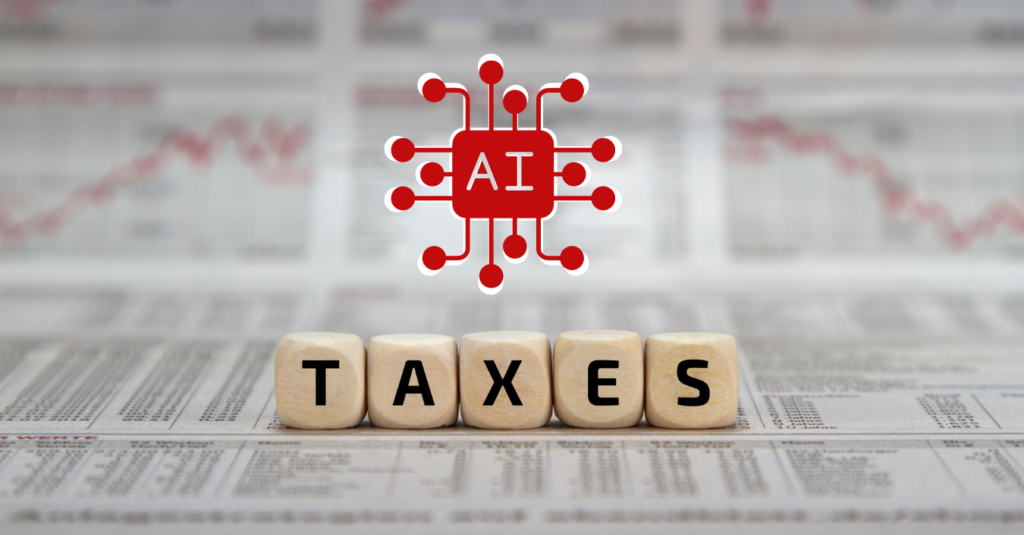A look at the risks and opportunities for AI in tax administrations

Last week I saw a young woman presenting on risk management in tax administrations. The presentation was immaculate and well-spoken, with many insightful and thought-provoking points based on decades of experience. She didn’t make a single mistake. I know because those decades of experience come from me; I wrote the script. She was an avatar created by an AI function.
Investment in AI could reach $200 billion by 2025
AI investment forecast to approach $200 billion globally by 2025 (goldmansachs.com)
Since the introduction of open-access generative AI such as ChatGPT in 2022, the world has been changing rapidly. People find new and innovative ways to use generative AI every day. And when the world changes, tax administrations also need to change.
Let me start by saying that I do not specialise in AI but in risk management and tax administration. This blog’s input is my own point of view and does not necessarily represent that of the Danish Tax Administration.
AI has been in use in tax administrations for many years. Examples include such applications as chatbots and machine learning-based scoring models to find high-risk tax cases. We know about these, and while they have brought efficiency to tax administrations while carrying their own risks, they did not create fundamental changes in tax administration. Generative AI changed that when it became available cheaply and to everyone. But is it the beginning of paradise or the apocalypse for tax administrations?
In this post, I share some of my thoughts on the risks and opportunities of using AI in tax administrations.

AI has the potential to make tax administration more efficient for everyone
AI makes our lives easier and more convenient. There is no need to have somebody make minutes from meetings, as the AI copilot is doing it for us. We just need to check if the result makes sense. Writing a memo or report? Well, AI can also do that. It might not always hit the right spot, but it will save you many hours of tedious fact-finding. Need to do some slides for tomorrow’s meeting with the commissioner, and you need them to look smashing? Feed it into the AI – it can do it much better than you and in a few minutes. These are some of the smaller examples.
But what about taxpayers? Have a question about filing your taxes? Just phone the chatbot. It provides guidance on most subjects. Oh, and by the way, it understands and responds in twenty languages. For the administration, it also files the types of questions and recommends to the guidance unit where to focus the communication campaigns.
We can take the examples even further. Do you need to do your taxes, and are you unsure of the complicated taxation legislation? Feed your data into a TaxGPT and it will do it for you. It even found some of the less-known tax deductions. The tax administration is happy because you pay what you owe – no more, no less – and you are happy because you saved a lot of time and even got some money back!
Perhaps you work in customs, trying to prevent illegal imports. The AI just informed you that the large shipment of goods into London was relabeled on the way to disguise the source. Luckily, the AI saw the pattern despite the relabeling. It is the third large mislabeled shipment to arrive at a certain logistics firm this month. Perhaps it is worth further investigation? The owner has three other companies, by the way, which seem to have the same issues.
Usually, the yearly filing deadline is a peak period for tax administrations, but not this year. All the filing comes in electronically. The AI handles 90 % of them automatically and picks out high-risk cases for a select group of auditors, noting where it believes the filing needs to be changed or seeing patterns of mistakes, fraud, unusual behaviour or similar issues. The new person in accounting needs some onboarding – AI can take care of the basics before handing him over to experienced colleagues. The chatbot used an avatar and responded so well to her questions that the new employee may not have spotted the difference had she not been informed.
Does all of this sound like science fiction? Well, it is both already happening and right around the corner. But with great opportunities also come great risks. Let us look at some of the downsides.
A group of IT developers assembled an AI that looks for loopholes in the tax legislation. They immediately begin a focused tap of money from the tax authorities when they find them. New legislation will take months or even years to get through. Meanwhile, money is flowing out of the public coffers. When the loophole is closed, they turn to a different hole. It might be morally wrong, but it is not illegal.
The chatbot that graciously answered your questions on how and where to pay your extra taxes was not part of the tax administration—it was created by a group of fraudsters who routed your payments into their accounts. From now on, you will be suspicious of any dealings with the tax administration.
Generative AI deepfakes fraud has increased by 1200% in the US and Canada witnessed a 4500% increase in deepfakes usage between 2022 and Q1 of 2023.
Risks include widespread errors and unexplainable results
The AI that picks out filing cases to audit appears to have been trained on bad-quality data. As a result, audits this year have been heavily slanted towards small businesses instead of being based on risk profiles across all taxpayer segments. The media picked up complaints, and the minister may have to resign. Later, it turns out that a foreign state had hacked the systems feeding biased data to undermine trust in the tax administration.
Once the auditing AI is retrained on high-quality data, it performs admirably. The hit rates are higher than ever. Unfortunately, the tax administration can’t explain why the cases are picked out. It works, but we don’t know why. An elderly taxpayer complains and asks why he was chosen when he has consistently reported his taxes correctly and on time. The tax administration cannot explain why, but it maintains that AI is always correct. The media interviewed the pensioner, who said that machines had taken over and that he had lost all trust in the system.
Later, the media reports that the administration has AI categorising taxpayers according to previous behaviour and predicting future errors and fraud. Big headlines talk about profiling, surveillance of the citizens and the Orwellian future that the tax administration has created.
Just because we can do something does not mean we should. But do we need new ethics-driven legislation to ensure good behaviour?
The above examples show that there are several risks and opportunities involved in using AI, such as:
Opportunities
- Better use of resources
- Better customer service
- More focused audits
- Better guidance for taxpayers
- Aid in analysis
- HR onboarding
Risks
- Data bias
- Societal changes and upheaval
- Overreliance on AI
- Lack of transparency
- IT security
- Misinformation
- Trust in the administrations
- Fraud
- IT illiteracy
- Unethical behaviour
As AI seems inevitable and daunting, comfort may lie in fundamental principles
So what does it all mean? There is an element of going back to basics. Many things we are already focusing on, like data quality, cybersecurity, transparency, and such, are even more relevant now. Tax must focus on many types of taxpayers, some of whom are uncomfortable with technology.
We must also be clear about our risk appetite in using AI, particularly reputational risk. Trust is easily lost and only gained with difficulty, and trust is one of the foundations of public institutions. There are a lot of dilemmas and choices in the use of AI; the higher the risks, the more to gain or lose. At the same time, I don’t think we are left with much choice in not approaching AI or not using it because this new reality is moving at a fast pace. As you read this, the world is moving. We also need to question whether we have the right set of competencies and perhaps even ask the difficult questions – are we, as tax administrations, moving away from traditional core functions such as auditing and other tax competencies towards a need for IT and AI competencies? It is difficult for large public organisations to move and change the culture, but perhaps it is necessary. Do we really have the time to upskill existing employees? Tax administration is surely not the only sector asking these questions.
Box: 62% of business executives lack the skills to execute their AI strategy
The Prompt: Generative AI survey | Google Cloud Blog
We also need to document our risk appetite and approaches to using AI, as Canadian and Australian administrations have done, for example. We should build up AI competencies, test the new technology in less risky areas, and let it mature. We must also do project risk assessments and become more familiar with the technology before scaling up the solutions. There should be an organ to oversee the use of AI in the tax administration.
AI can add significant value to tax administrations, but it is essential to know the risks involved. We must consider regulations and monitor the use of AI to avoid reputational risks which will affect the entire administration.
78% of executive leaders believe the benefits of generative AI outweigh the risks
To conclude, it is not a question of choosing whether or not to get on the train; the train is already moving whether we want it or not. Tax administrations should embrace AI but be aware of the risks and opportunities. Finally, I’ll let you guess if I wrote this blog post myself.

































